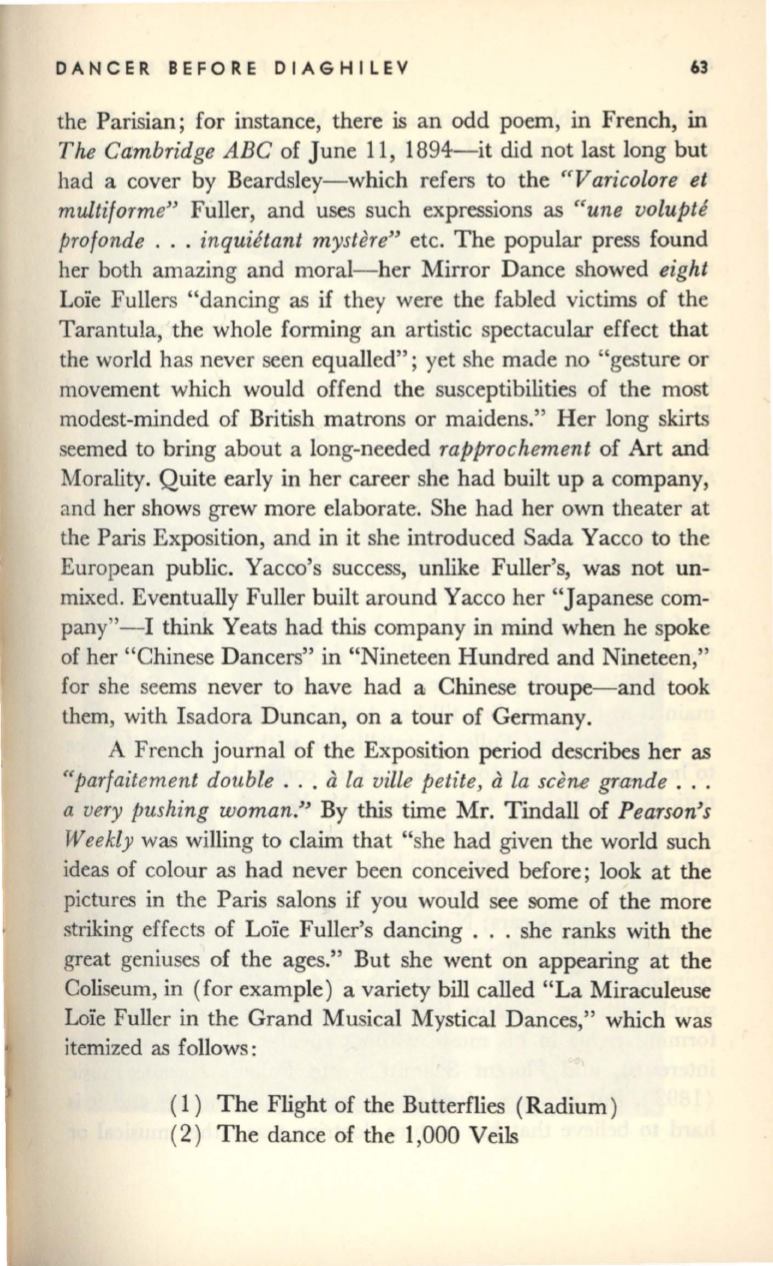
DANCER BEFORE DIAGHILEV
63
the Parisian; for instance, there is an odd poem, in French, in
The Cambridge ABC
of June 11, 1894-it did not last long but
had a cover by Beardsley-which refers to the
((VaricoLore et
multiforme"
Fuller, and uses such expressions as
((une voLupte
profonde
...
inquietant mystere"
etc. The popular press found
her both amazing and moral-her Mirror Dance showed
eight
Loie Fullers "dancing as if they were the fabled victims of the
Tarantula, the whole forming an artistic spectacular effect that
the world has never seen equalled"; yet she made no "gesture or
movement which would offend the susceptibilities of the most
modest-minded of British matrons or maidens." Her long skirts
seemed to bring about a long-needed
rapprochement
of Art and
Morality. Quite early in her career she had built up a company,
and her shows grew more elaborate. She had her own theater at
the Paris Exposition, and in it she introduced Sada Yacco to the
European public. Yacco's success, unlike Fuller's, was not un–
mixed. Eventually Fuller built around Yacco her "Japanese com–
pany"-I think Yeats had this company in mind when he spoke
of her "Chinese Dancers" in "Nineteen Hundred and Nineteen,"
for she seems never to have had a Chinese troupe-and took
them, with Isadora Duncan, on a tour of Germany.
A French journal of the Exposition period describes her as
uparfaitement double .
..
a
la ville petite,
a
La scene grande .
..
a very pushing woman."
By this time Mr. Tindall of
Pearson's
Weekly
was willing to claim that "she had given the world such
ideas of colour as had never been conceived before; look at the
pictures in the Paris salons if you would see some of the more
striking effects of Loie Fuller's dancing ... she ranks with the
great geniuses of the ages." But she went on appearing at the
Coliseum, in (for example) a variety bill called "La Miraculeuse
Loie Fuller in the Grand Musical Mystical Dances," which was
itemized as follows:
(1) The Flight of the Butterflies (Radium)
(2) The dance of the 1,000 Veils


